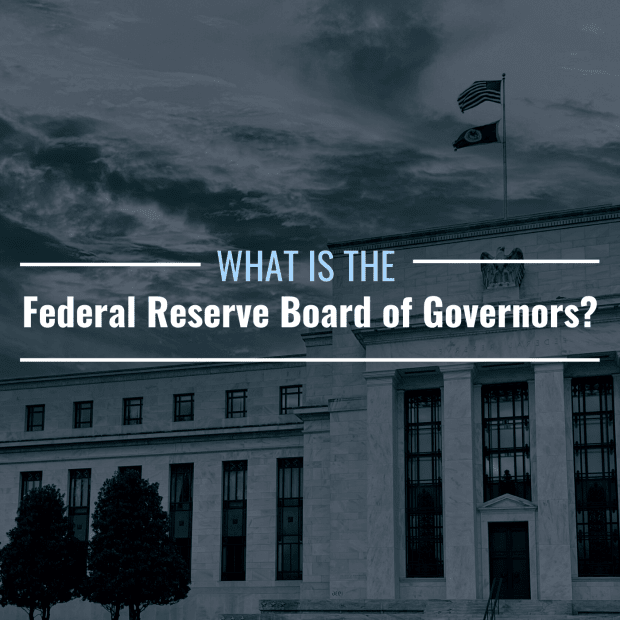
tupungato from Getty Images; Canva
The central bank of the United States is known as the Federal Reserve. Founded in 1913 under the Federal Reserve Act, it has a dual mandate to “effectively promote the goals of maximum employment and price stability” through its monetary policies.
The Federal Reserve is structured into three parts:
- The Board of Governors, headquartered in Washington, DC, is considered the Fed’s main governing body.
- Twelve Federal Reserve Banks, located in strategic geographic locations, conduct the Fed’s fiscal operations, such as printing currency and authorizing loans.
- The Federal Open Market Committee (FOMC), made up of the Board of Governors as well as voting and non-voting Federal Reserve Bank presidents, sets the Fed funds rate and manages the Fed’s open market operations. It meets in Washington, DC.
What Does the Federal Reserve’s Board of Governors Do?
The main role of the Board of Governors is to manage the Federal Reserve system by overseeing the 12 Reserve Banks and providing guidance when they lend to depository institutions. It also addresses the needs of consumers through policy analysis and research, and through its actions, it seeks to foster a fair and transparent financial services market for all.
Some of the Board of Governors’ biggest responsibilities include setting reserve requirements for the nation’s banks and managing the discount window, which is a special, emergency credit authority that depository institutions can turn to in times of distress.
How Many People Are on the Fed Board of Governors? How Are Fed Board of Governors Chosen?
The Fed Board of Governors has seven members. Each Governor is appointed by the U.S. President and confirmed by the U.S. Senate.
The Fed Chair and Fed Vice-Chair also serve as Governors, and their term lasts for a total of four years. The other five Governors can serve for 14-year individual terms, but if they are appointed to replace an outgoing Governor, their term can actually stretch longer.
According to the Federal Reserve Act, the Governors should represent a diversity of American interests, and so candidates are sought representing the very best of the financial, agricultural, industrial, and commercial sectors. In addition, each Governor must be selected from a different Federal Reserve District. In 1977, Congress mandated that one Fed Governor must have experience in community banking, as well.
Board of Governors member responsibilities include leading committees on important contemporary economic issues (such as affordable housing and e-commerce), overseeing the activities of the Federal Reserve Banks, and serving on the Federal Open Market Committee (FOMC).
Each Governor is supported by a team of economists and administrative staff who assist them in drafting policy.
Who Currently Serves on the Fed’s Board of Governors?
Currently, there are only six members of the Fed Board of Governors. Fed Governor Lael Brainard vacated the role of Vice Chair in February 2023 in order to serve as President Biden’s appointment for Director of the National Economic Council.
- Jerome H. Powell, Chair
- Michael S. Barr, Vice Chair for Supervision
- Michelle W. Bowman
- Lisa D. Cook
- Philip N. Jefferson
- Christopher J. Waller
How Often Do the Fed Board of Governors Meet?
The Fed Board of Governors typically meet twice a month by teleconference or at the Federal Reserve headquarters in the Marriner S. Eccles Building at 2051 Constitution Avenue, NW Washington, DC 20551.
The public is welcome to attend these meetings under title 5, section 552b of the U.S. Code, also known as the Government in the Sunshine Act, unless the Board determines that its meetings should be private. Legal exemptions, as defined in the act, include matters related to national defense or foreign policy.
Board of Governors meetings have been closed to the public since the onset of the COVID-19 pandemic in 2020, but when the board does hold open meetings, members of the public can attend by registering several days in advance. They must provide their name, date of birth, and passport number or social security number. Registration is available via the Fed’s website or by dialing (202) 452-2474.







